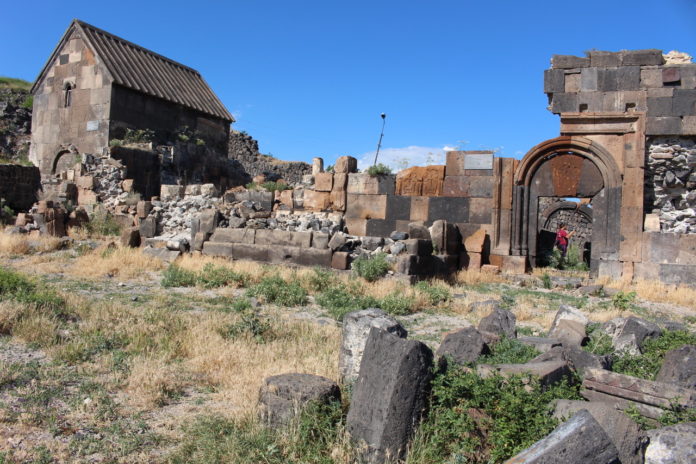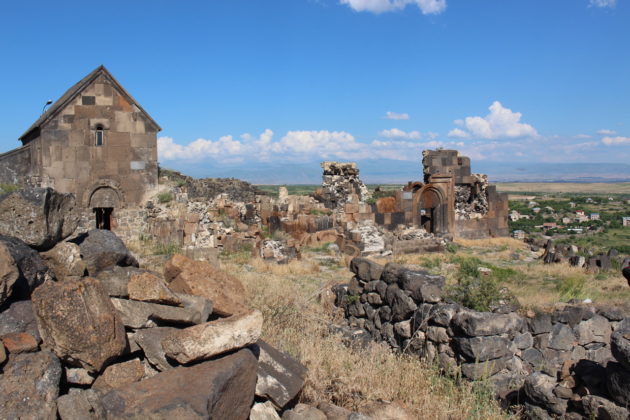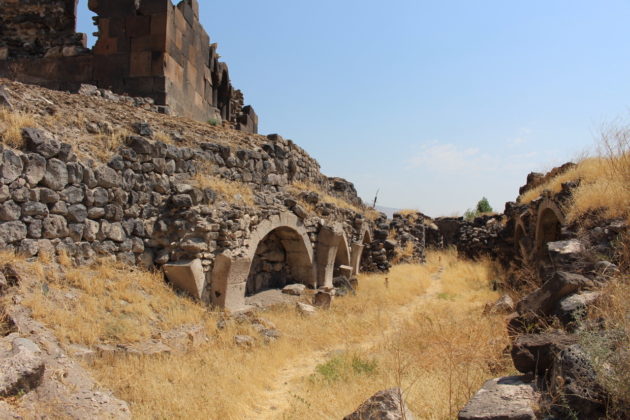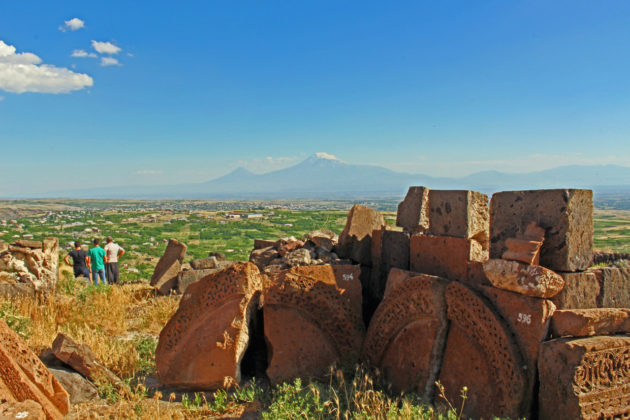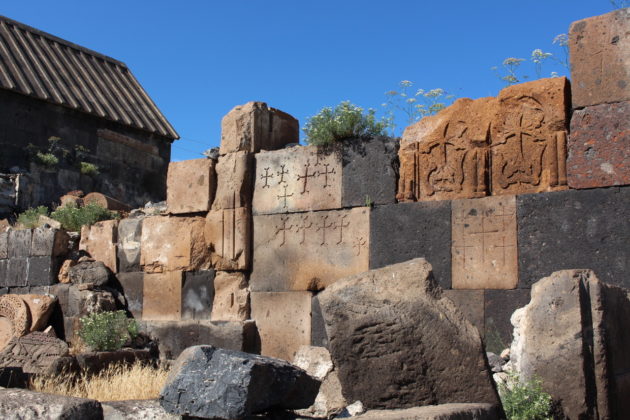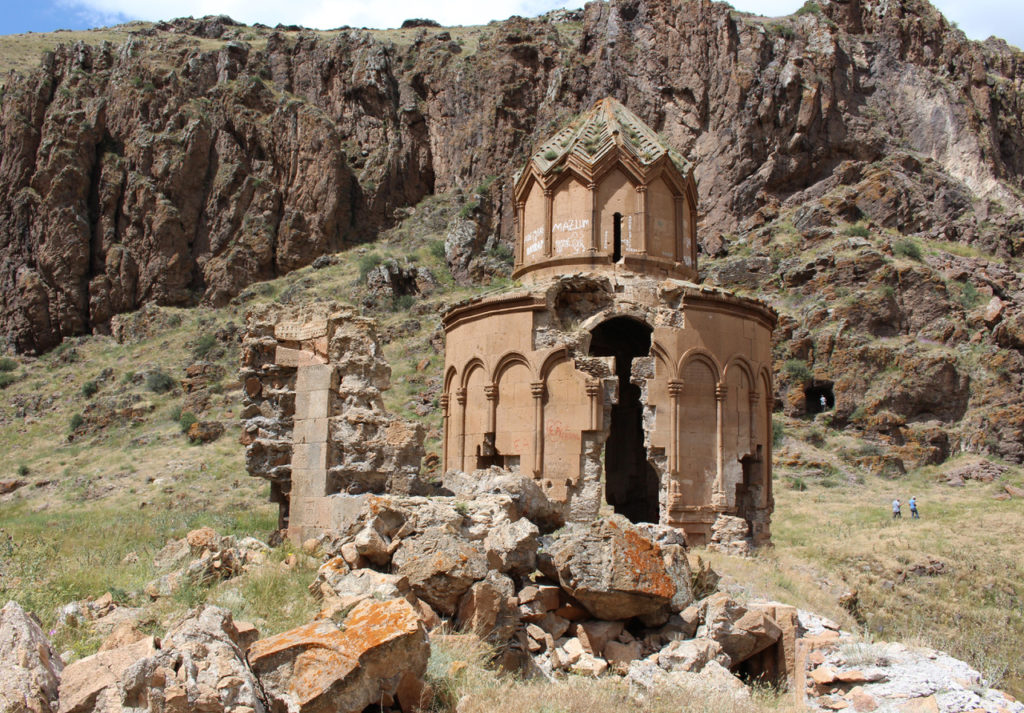By Hovsep Daghdigian
YEREVAN — We were driving north from Yerevan, towards Aparan. Passing the village of Ushi, my friend Vova asked, “Have you been to Ushi?” “Of course, I’ve passed here many times,” I replied. “So you’ve seen Surb Sargis monastery?” “Surb Sargis? No!” I had not; I was not even aware of its existence. Following a very brief conversation we reversed direction and entered Ushi. I’ve been back two additional times…so far.
Ushi, roughly 17 miles north west of Yerevan, is on the west side of the Kasakh river valley. The road to Ushi is good; travel time from Yerevan is about 40 minutes. Cab fare is affordable, but it’s best to first negotiate an approximate fare with the taxi driver. The Surb Sarkis Monastery complex, dating from the 5th-18th century, is on the western edge of the village. On a small rise next to the monastery are the remnants of a late Bronze Age to early Iron Age settlement, dated to the 2nd to 1st millennium B.C. The monastery is spectacular. A car can get to within 50 yards of the monastery, then it’s a short walk up a few stone stairs.
Surb Sargis
Sargis was a military officer, appointed by Byzantine emperor Constantine the Great, to be the general in charge of Cappadocia near the border of Western Armenia. Sargis was a Christian and probably, though not for certain, Armenian. Constantine was the first Roman/Byzantine emperor to accept Christianity. Forty-two years after Constantine’s death his nephew, Julian the Apostate, became emperor and began persecuting Christians. Sargis resigned his military commission and sought refuge in Armenia with his son Martiros where he was offered protection by Armenian king Arshak II. But as Julian’s army advanced eastward the Persian King Shapur II, hearing of Sargis’ military skill, offered Sargis a command position in his army. Later, realizing that Sargis and many of his soldiers were Christian, King Shapur tried to force them to abandon their faith and convert to Zoroastrianism. Defying Shapur’s orders, Sargis’ son Martiros, as well as many of his Christian soldiers, were killed. Sargis chose martyrdom rather than renouncing his faith; he was beheaded in the 4th C. His body was buried in Namyan, Mazandaran province, Persia, by some of his soldiers. His remains were brought back to Armenia by Mesrob Mashtots and buried in the village of Ushi.
Legends



